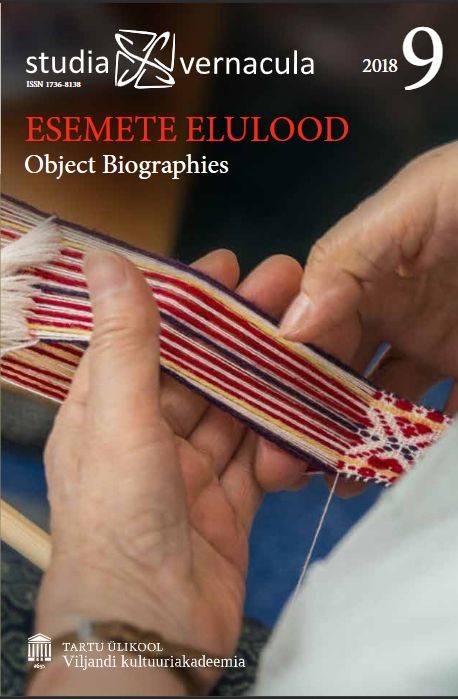Saaremaa sariküllid: kihelkondlikud eripärad ja ajaloolised kandmisviisid / The Saaremaa sariküll: their regional characteristics and the ways they were worn historically
DOI:
https://doi.org/10.12697/sv.2018.9.68-95Abstract
Saaremaa folk costumes are rich in different types of headgear. Women wore scarves, bonnets, woollen caps of various shapes, and, in later periods, hoof-shaped caps (kabimüts). Üll was the term used in Saaremaa for all sheepskin winter caps. These could come in different shapes; the most distinctive of these, however, was the horned women’s üll – sariküll. This black lambskin cap, with its long characteristic horns that give the cap its name, and its red or blue baize crown, has been a significant part of Saaremaa folk costumes.
The earliest printed records of sarikülls worn in Saaremaa can be found in August Wilhelm Hupel’s Topographische Nachrichten von Lief- und Ehstland printed in Riga in 1782. Descriptions of sarikülls accompanied by drawings and photos were subsequently presented by Friedrich Carl Hermann Kruse in his Necrolivonica, as well as by Axel Olai Heikel in Die Volkstrachten in den Ostseeprovinzen und in Setukesien and by Ilmari Manninen in his history of Estonian folk costumes.
The sariküll was a winter cap worn by both maidens and married women with two horns, which could be long or short, straight or bent. In the 19th century, sarikülls were worn in all of the parishes of Saaremaa as Sunday headgear. The caps were worn to church, but also used in weddings as a bridal headdress. Mourning ülls were also common. Records from Karja, Valjala, and Kihelkonna show that maidens were given a sariküll for confirmation. Sarikülls were not worn by children. All Saaremaa sarikülls preserved in museums today were worn with the horns at the front and back. There are some written records that suggest that horns were worn at the side in some parishes, but these records are not confirmed by the museum items. A scarf was worn on top of the üll.
Similar caps were not worn in other regions of Estonia, but they can be found in the Slavic tradition. We can only speculate about how these striking horned caps found their way into the headgear of the Saaremaa women. Submission to Imperial Russian rule and the appearance of distant traders at fairs in Kuressaare may have brought the fashion of horned headgear to Saaremaa.
To provide a typology of the sarikülls, I classified the caps by the shape, size, and the location of the horns, as well as the materials used for crafting the sariküll and the ways they were worn. I employed a qualitative approach, measuring and inspecting the sarikülls while studying the crafting techniques. To check how the pattern matched the original, I sewed one üll of each type. Sarikülls found at the Saaremaa Museum were used as models. In the course of gathering materials for my research, I studied sarikülls preserved at different museums: 6 caps from the Saaremaa Museum and 31 from the Estonian National Museum. Using materials found on their websites, I also studied two Saaremaa sarikülls now held by the Hungarian Ethnographic Museum and the National Museum of Finland.
All the sarikülls I studied were hand-sewn following a pattern, but the materials used for different types of caps vary. The crown of the sariküll is sewn from either red or blue baize, using blue, black or red piping between the stitches. In some cases, the crown is also decorated with woollen threads and strings of glass beads. The linings of all sarikülls are made from white sheepskin. Variations in design are at their greatest in the horns giving the sariküll its name, and in the straight trimming, puhk, which connects the horns. A variety of materials were used for the horns and the puhk. Mustjala sarikülls are made from black and Eastern Saaremaa caps from grey lambskin. Kihelkonna ülls were made from black baize and Sõrve caps from black woollen fabric.
The article contains drawings of all üll patterns; a table providing data on all the studied caps is found at the end of the article.
Keywords: folk costumes, folk art, caps, Saare County, handicraft, sewing, leather

